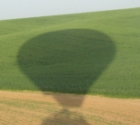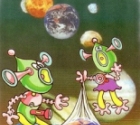
"Geography in a bottle"
Often I encounter people who want to know more about wine so they can better appreciate what they’re drinking, as well as know how to buy wines that they and their friends, family or business associates will enjoy. One could easily become dissuaded from learning about wine because there is so much one can learn about it and still have plenty left to learn. I have been studying and enjoying wine for over 25 years and am often quoted as an expert, yet I still feel my wine education is incomplete. But don’t be discouraged. If you’re curious about wine it’s good to start off with the mantra that “there’s too much to know everything about wine” so don’t even try. Rather, develop a good basic understanding and then with time continue to expand your general knowledge and possibly develop some more specific niches, depending on your taste or areas of curiosity.
For instance, there are three distinctly fruitful paths when first developing wine knowledge. In “Old World” wine regions, such as most of the pre-Columbian European wine regions of France, Italy, Spain and Portugal some of the most famous wines and styles of wines became popular and have been imitated around the globe. Getting a good knowledge of who grows what wine grapes, where and what kinds of wines they make and why they developed certain traditions and customs associated with wine is a great exploration of their cultures as well as their wines. British wine author, Jancis Robinson, has often been quoted as saying “wine is geography in a bottle”, so learning about one does lend itself to the other. Many wines in Europe will not even list the grape on the bottle, and it’s for the consumer to know that they traditionally, and often by law, require certain wines to be made from certain grapes in particular regions. For instance, the wines made in Champagne and Burgundy, the coolest and most northern wine regions in France are primarily made from white Chardonnay and red Pinot Noir grapes. The success of those grapes is a model for other cooler regions in the world, and the grapes they grow are more commonly planted in other cool regions rather than in warmer regions. Nevertheless, you will not see the names of the grapes on the bottles' labels in Champagne or Burgundy. There are thousands of wine regions in the world, but learning about a dozen of the largest and most popular is a good place to start when first whetting your appetite for wine. You might start your wine exploration in places you’d like to visit or on wines from where your family hails.
Another approach is to learn about the different wine grapes and styles. This is how wine bottles are more typically labeled outside of Europe, where wine labels depend more commonly on the prominent grapes in the bottle, than in less traditionally bound regions such as the United States, Australia and South Africa. It’s not that these countries haven’t been making wine for centuries, but they haven’t developed the restrictive traditions that European wine regions have, so there are no laws governing what’s planted where. When a wine has the name of one grape on the front label, it’s called a “single varietal” wine, and by international standards, it must contain at least 85% or more of that one grape (although by US standards it is 75% or more). So, learning the flavors and characteristics of wine grapes is a way of learning about the ingredients that commonly go into wine. Here, once again, don’t be intimidated by how much information there is out there. There are literally thousands of different wine grapes (3,000 in Italy, 300 in Greece and probably less than 50 in Israel). Learning about one or two dozen wine grapes and styles will open you up to over half the wine in the world. The most popular wine grapes from Europe have had their vines clipped, cloned and planted in all the major wine regions across the globe. So even though Cabernet Sauvignon was popularized in the Bordeaux region of France, it can be found in most New World wine regions, including California, Chile and the Judean Hills of Israel. Each grape variety has a varietal profile, so you may find that you like different wines from different regions using the same grape, and focus your wine education on learning about a few grapes you prefer. For instance, Cabernet Sauvignon grapes often display the flavors and aromas of black currant, but you might find you prefer the plummy flavors and aromas more commonly associated with a Merlot.
A third way to approach wine is to learn how it relates to food. In many countries in Europe, a meal isn’t complete unless wine is served, and even the children grow up drinking wine. It’s mixed with water and as the children grow up less water is in the mix. The wines in these regions evolved with the cuisine so that some of the best gastronomical experiences one can imagine await someone who tastes local dishes with the local wines. For instance, if you love pasta or pizza, maybe you should try a Sangiovese-based wine since it is the red grape in Italy’s Chianti wines.
There are many good websites, books, magazines and weekly newspaper columns to guide you on your quest, and remember, with wine – it is more about enjoying the journey than reaching any final destination. For, if you become a wine geek like me you might just want to try any good wine made from any grape or from any region to celebrate what’s most unique about wine compared to any other beverage. For wine is a celebration of deviation from year to year, place to place and grape to grape. With almost every other beverage we consume we seemingly seek standardization. However, with wine - "vive la difference!"

 Let’s have a bit of Playback
Let’s have a bit of Playback-1372659501.jpg) Buying New Construction in Israel
Buying New Construction in Israel A lot of hot air - ballooning
A lot of hot air - ballooning-1516356428.jpg) Hand in Hand Food Pantry
Hand in Hand Food Pantry Forever Slim
Forever Slim Food Foolish
Food Foolish David Rhodes
David Rhodes